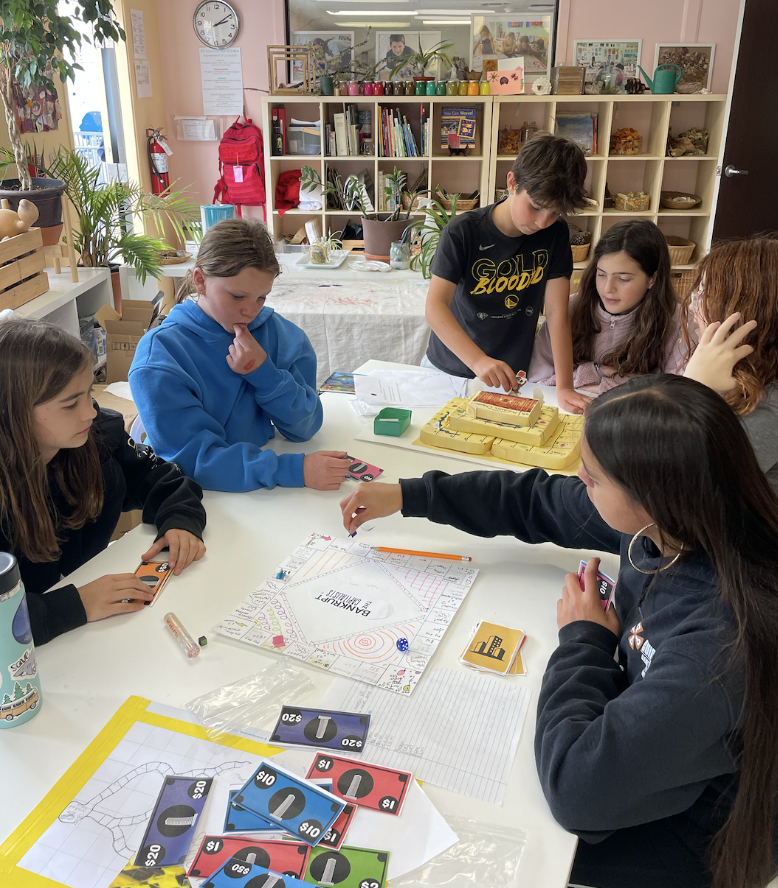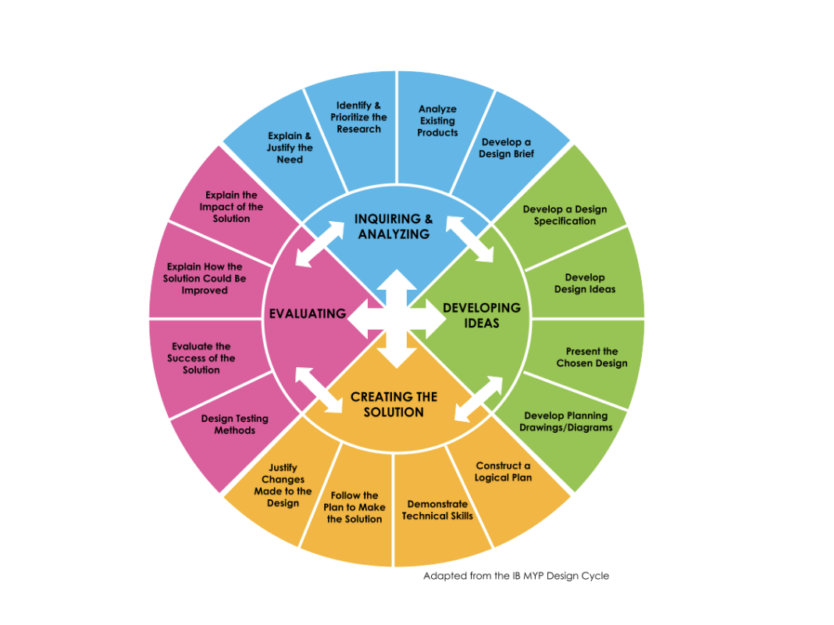In the International Baccalaureate Middle Years Program (IB-MYP) Design Atelier, the Design Cycle empowers students to be the protagonists of their learning journey, where failure serves as a valuable learning opportunity. Through the structured MYP curriculum framework of the Design Cycle, IB middle years program students actively engage in problem solving, creativity, and collaboration. They navigate through the iterative stages of identifying problems, generating ideas, and refining solutions, fostering critical thinking skills along the way.
As students encounter setbacks, they learn to overcome emotions and persevere, discovering alternative approaches and innovative solutions independently. By embracing the Design Cycle, IB middle years students not only develop essential design skills, but also cultivate resilience and independence in tackling real world challenges.
Design Cycle / FourPhases
Design is the subject where Middle School students learn and apply the concept of design thinking as part of their MYP curriculum. Every IB learner project we engage with asks students to dive into one or more of the four phases of the Design Cycle:
Inquiring and Analyzing
This phase is brimming with research and analysis, aimed at understanding existing knowledge around the issue or design. Students immerse themselves in the challenge, probing its nature. What exactly is it? Why does it manifest? Where does it occur? Whom does it impact? This explanation of existing products and knowledge guides and informs our approach as designers.
Developing Ideas
In this phase, students begin contemplating a range of approaches to tackle the challenge. Typically, every student sketches and outlines one or two individual solutions. As these solutions are deliberated upon in a classroom environment, and often evolve or intertwine with peers’ ideas, fostering extensive collaboration and attentive listening.

Creating the Solution
Once brainstorming concludes and feedback has been applied, a final design or solution is selected. Students create a detailed action plan and follow it to produce prototypes and models of their final designs, demonstrating their technical skills.
Evaluating
During this phase, testing methods are devised by students to assess the efficacy of their designs and solutions against specified criteria. Feedback is collected to pinpoint areas for improvement and to measure the impact of their designs on the intended audience. While this stage often marks the culmination of the process, it can also serve as a catalyst to revisit parts of the cycle to enhance their designs.
Student Projects
This past year Middle School students were able to use the Design Cycle on various projects. We’ve outlined three below.
- Designing ethically-sourced food products (Grade 7) – Students conducted research around existing products and ethical business practices in order to design a food product that was affordable, made of ethically-sourced ingredients, and tasted delicious.

- Collaborating with an urban planner to reinvent our green space and play spaces (Grades 6 – 8) – Students had the beautiful opportunity to have alumni parent Ilaria Salvadori, an urban planner for the City of San Francisco, join them each week during this project. Students worked on designing adaptable green spaces and play structures. In addition, they wrote proposals for temporary street closures to create a potential space for our community during the upcoming new building construction.

- Creating educational board games (Grades 6 – 7) – Students prototyped complete and original educational board games with partners. They engaged in a dynamic learning process of play-testing a variety of board games on the market – studying techniques, and identifying key strategies and modifications that improve the player experience. Next, they collaborated to design their own unique games. As they developed their games, students tested other prototypes, providing peer feedback on the player experience.

To learn more about La Scuola International School’s Middle School curriculum, IB program, pedagogy, ateliers, and other school information, please visit our website at www.lascuolasf.org.
Written by:
Yarrow Ulehman, IB-MYP Coordinator and Middle School Teacher
Share this Post

